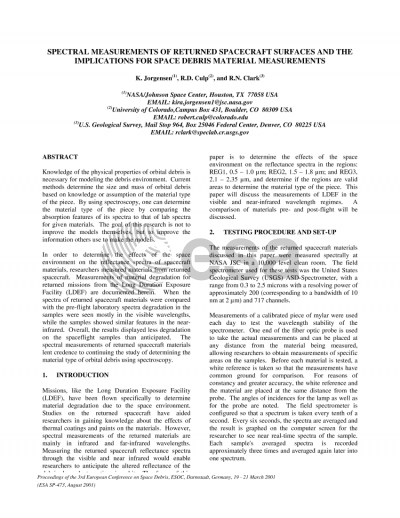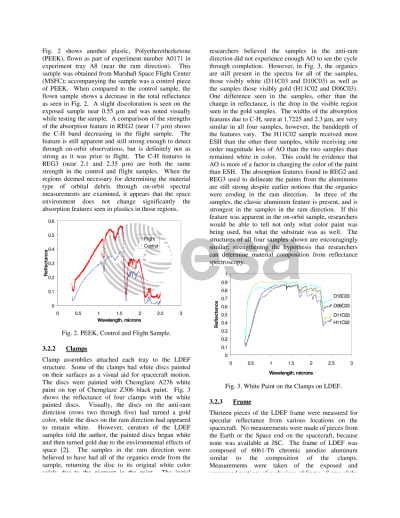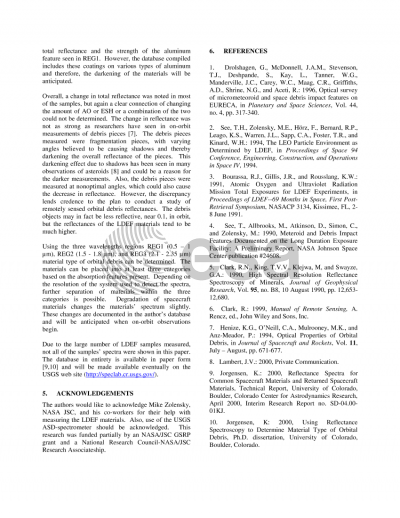Document details

Abstract
Knowledge of the physical properties of orbital debris is necessary for modeling the debris environment. Current methods determine the size and mass of orbital debris based on knowledge or assumption of the material type of the piece. By using spectroscopy, one can determine the material type of the piece by comparing the absorption features of its spectra to that of lab spectra for given materials. The goal of this research is not to improve the models themselves, but to improve the information others use to make the models. In order to determine the effects of the space environment on the reflectance spectra of spacecraft materials, researchers measured materials from returned spacecraft. Measurements of material degradation for returned missions from the Long Duration Exposure Facility (LDEF) are documented herein. When the spectra of returned spacecraft materials were compared with the pre-flight laboratory spectra degradation in the samples were seen mostly in the visible wavelengths, while the samples showed similar features in the near-infrared. Overall, the results displayed less degradation on the spaceflight samples than anticipated. The spectral measurements of returned spacecraft materials lent credence to continuing the study of determining the material type of orbital debris using spectroscopy.
Preview






